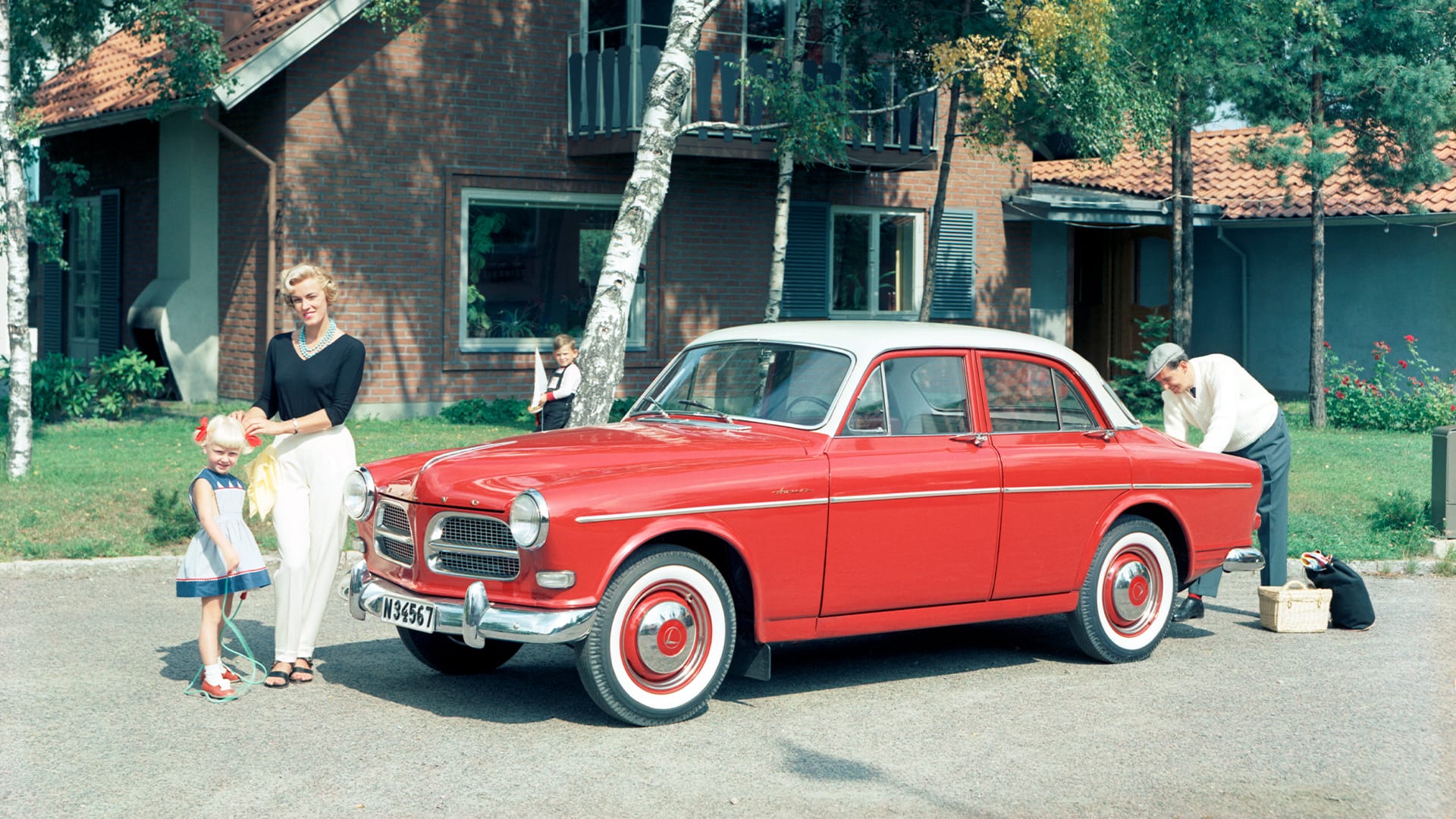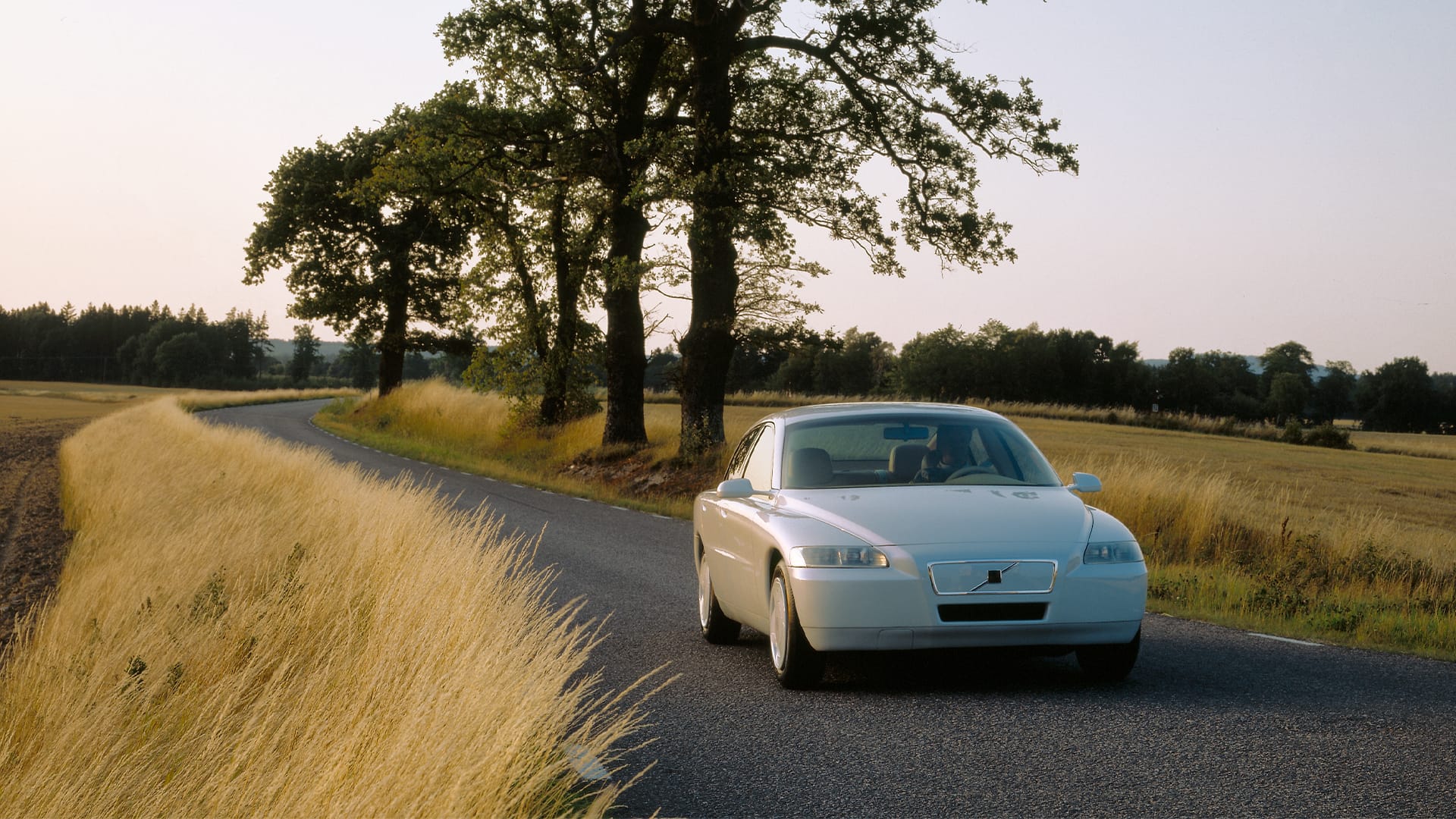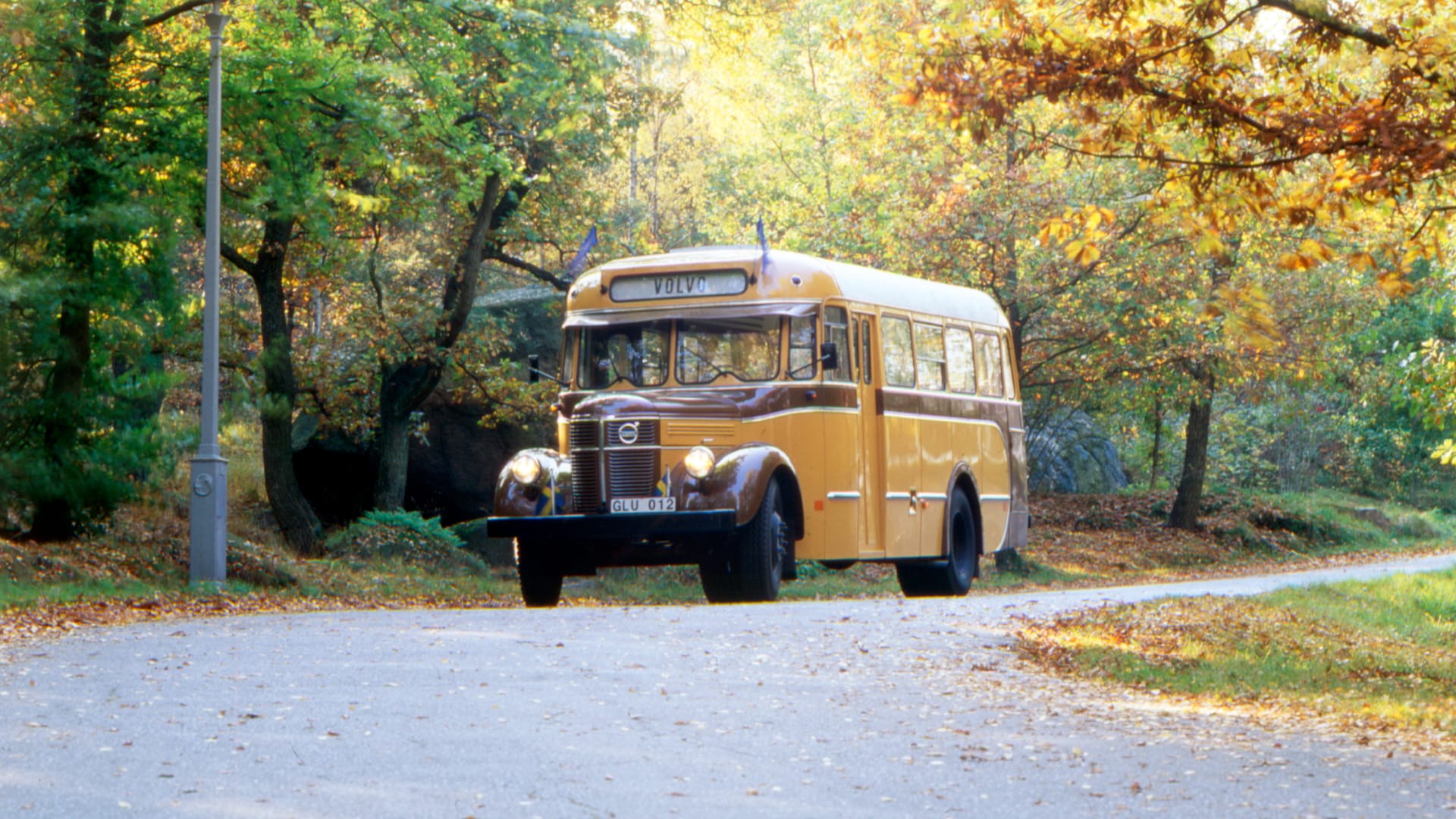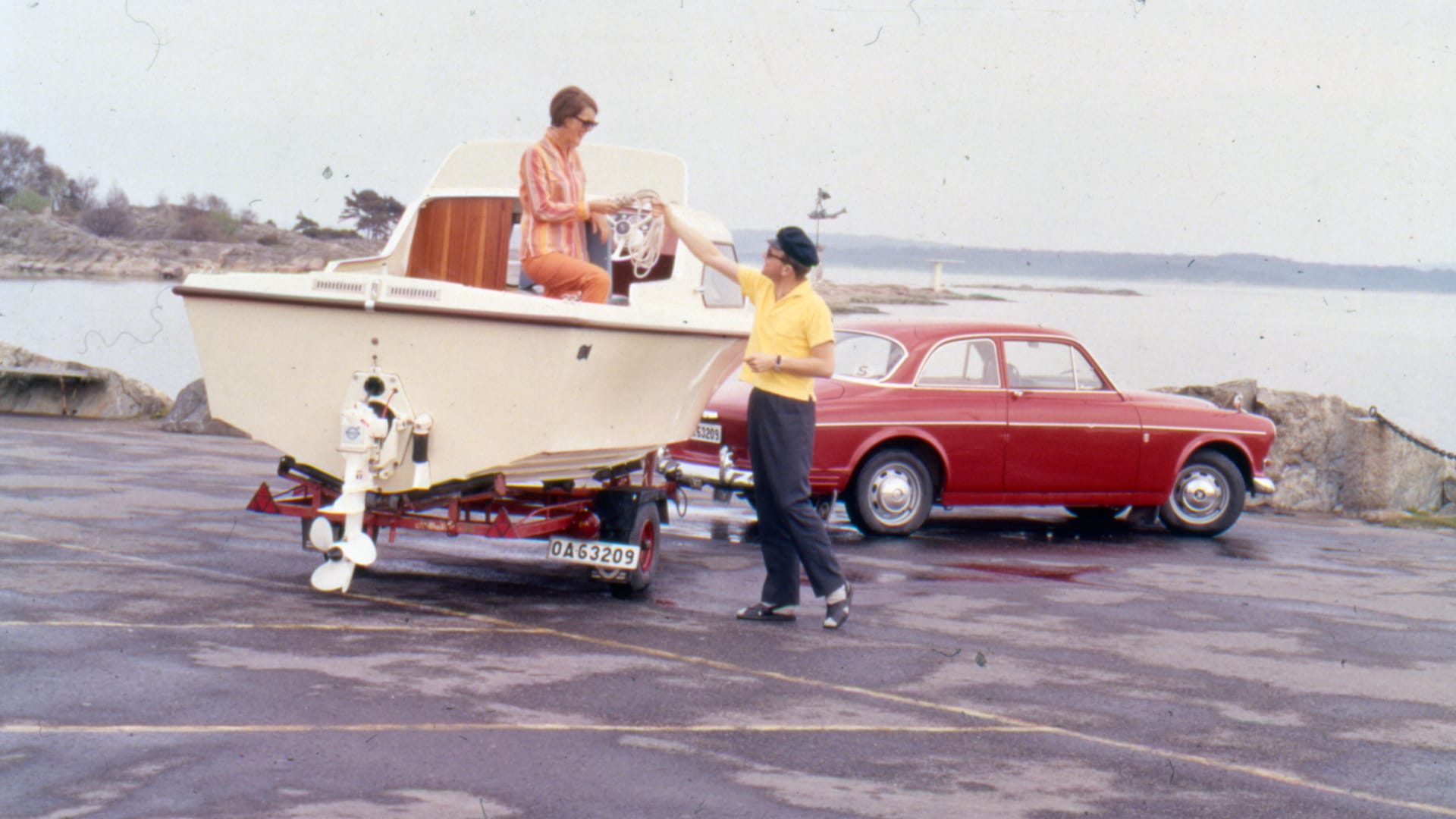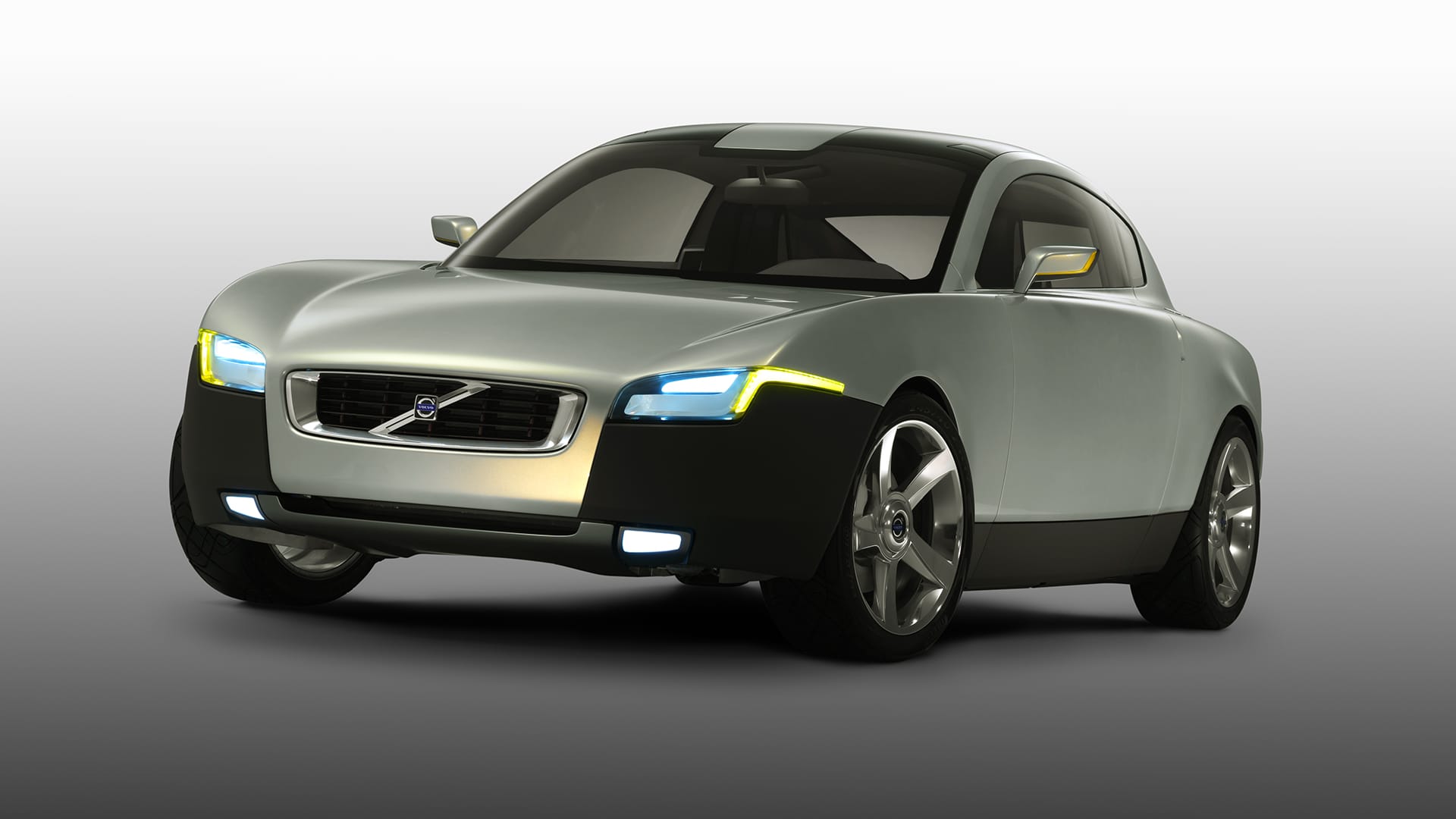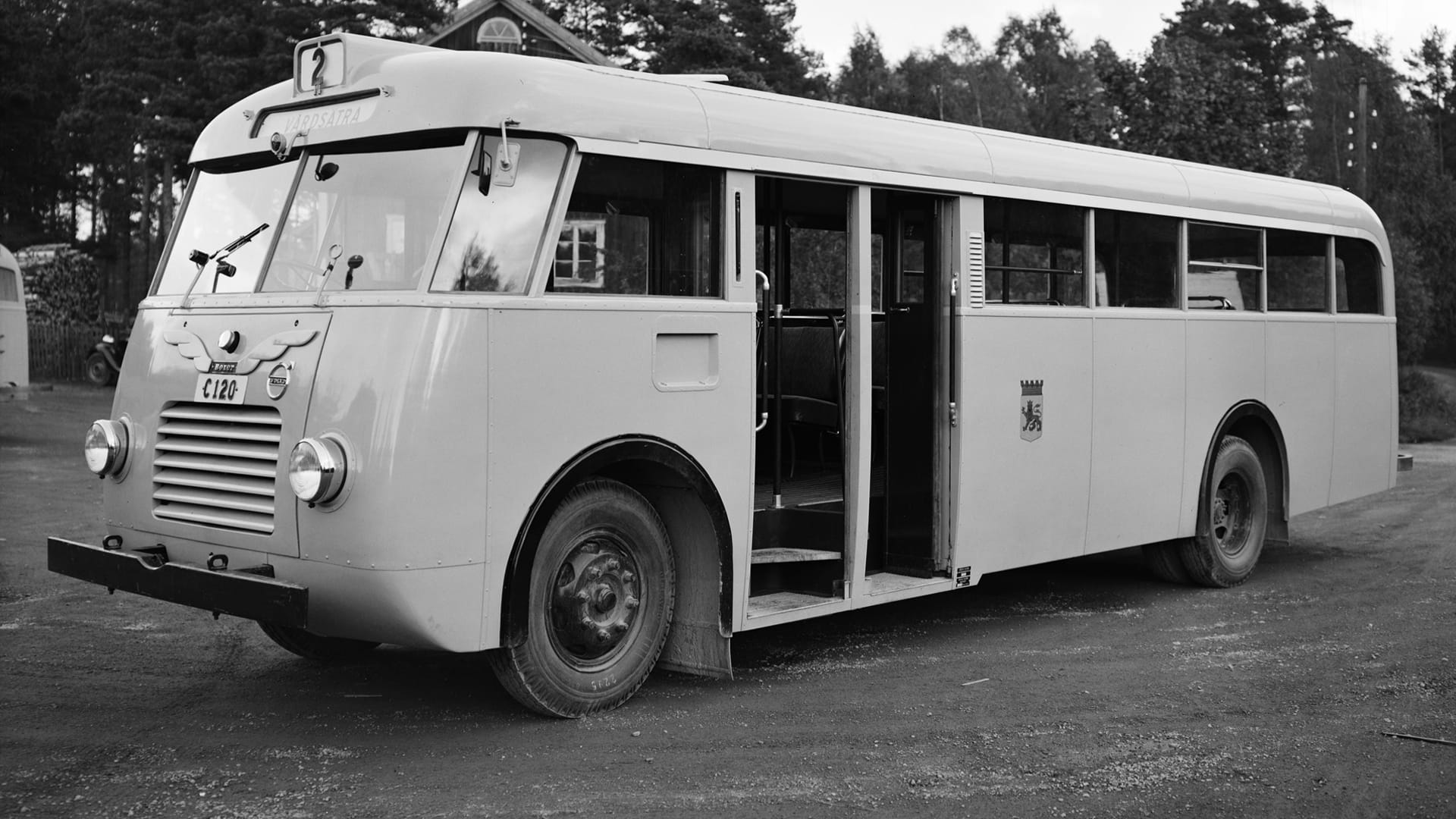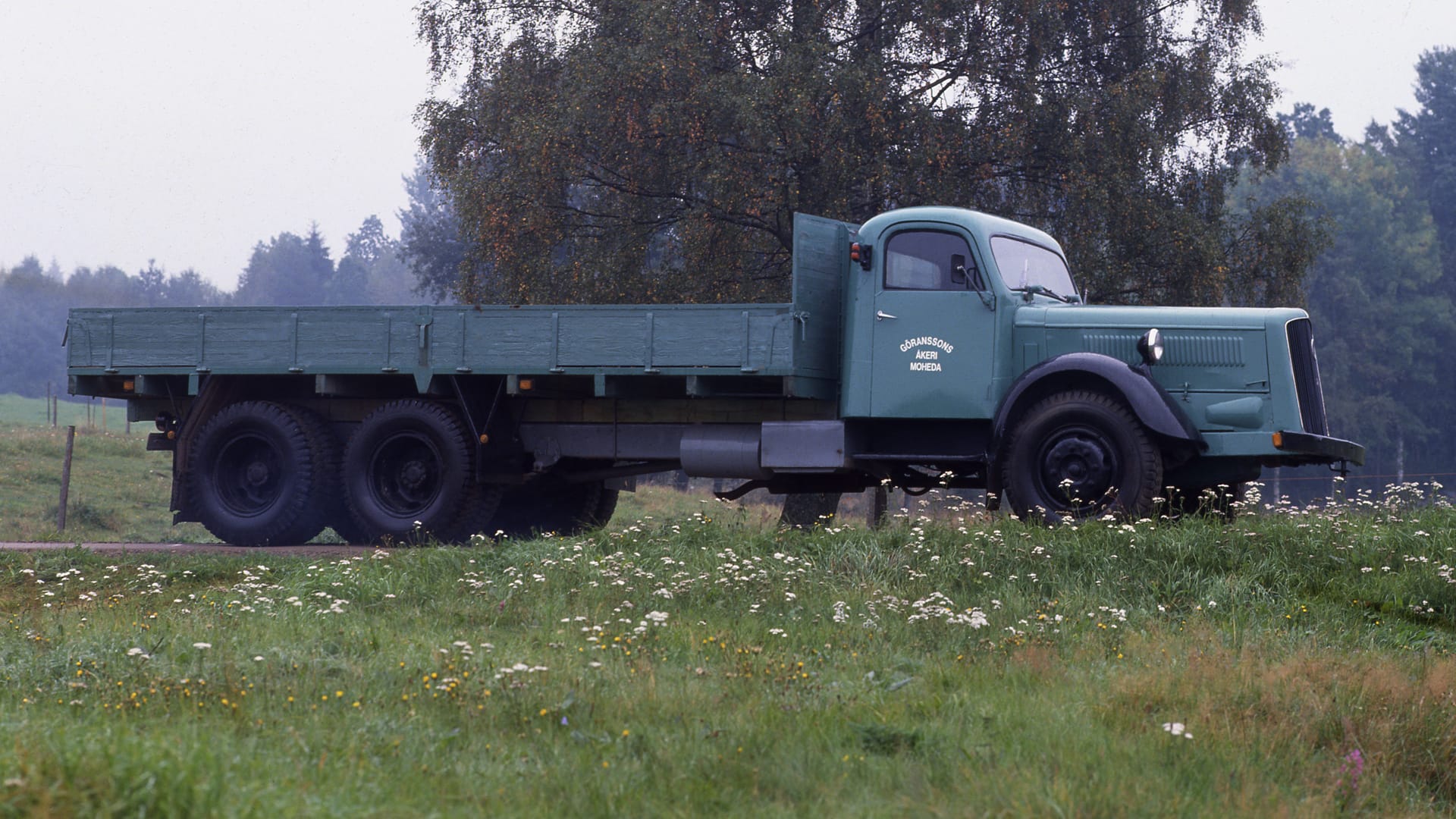Volvo T43

A successful emergency solution
During World War II, it is not permitted to manufacture vehicle for civilian use, so to keep the factories running, Volvo invests in tractors. They are needed for Swedish food production, which is prioritized in a time when borders are closed and there is a shortage of necessities.
Volvo collaborates with the established manufacturer Bolinder-Munktell (BM) in Eskilstuna and aquires the company in 1950. Volvo's first tractors have an identical rear end to BM's previous model, BM20. The third and larger tractor in the series, the red T43, arrives in 1946 and lays the foundation for Volvo's reputation as a manufacturer of quality tractors. The wartime emergency solution evolves into a major success. Over the next 30 years, a quarter of a million tractors are produced.
A shrinking market
After Volvo's acquisition of Bolinder-Munktell, tractor production grows rapidly, and by the 1960s, BM holds 40 percent of the Swedish market. But just ten years later, the business begins to falter. At Volvo's annual general meeting in 1979, the current CEO, PG Gyllenhammar presents an agreement to sell the tractors to the Finnish company Valmet, triggering strong reactions from both farmers, who are loyal customers, and politicians who want to preserve jobs in Eskilstuna.
Demonstrations
Trade unions chant "Tractor red gives us bread, tractor red gives us bread," and demands to stop the agreement with Valmet come from several quarters. But the figures speak clearly: in 1978, agricultural machinery accounts for 34 percent of Volvo BM's turnover, but by 1983, the share is down to nine percent. After 70 years, the last Volvo tractor is manufactured in Eskilstuna in 1983, although there is later some subcontracting for Valmet. The fear of mass layoffs at the Eskilstuna factory proves unfounded: no redundancies occur.
Jonas Hesselman
A total of 1,600 Volvo T43 tractors are manufactured between 1946 and 1950, with a price of 12,900 SEK in January 1949. The main competitor is the BM20, which in practice is the same tractor – but the crucial difference is that the Volvo is powered by a Hesselman engine, while the BM version has a hot bulb engine. The Hesselman engine is named after the engineer Jonas Hesselman (1877-1957). He works at AB Diesels engines from 1899 to 1916, which later becomes today's Atlas Copco, and is among other things the company's chief engineer. The first diesel engines get a bad reputation, and Hesselman devotes himself to various improvements. In 1925, he develops an engine that is a hybrid between a petrol and diesel engine, named after himself.
The Hesselman engine starts on petrol but then runs on kerosene, diesel, or wood gas. The engine is cheap to operate and lighter than diesel engines, becoming popular in buses and heavy trucks during the 1930s. Tractors play a significant role in domestic food production both during and after the war, even in the latter half of the 1940s. Rationing is periodically introduced on butter, pork, meat, sugar, coffee, tea, cocoa, bread, flour, barley, and on soap and detergent.





